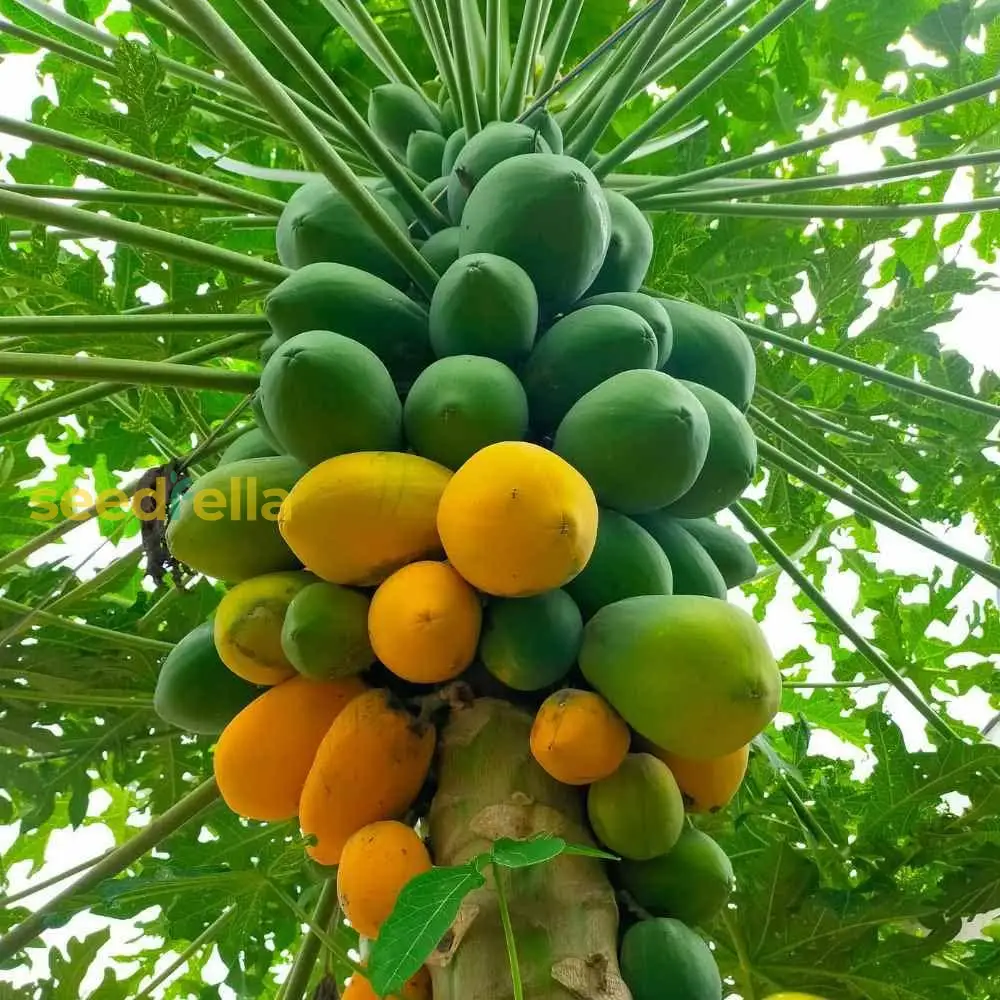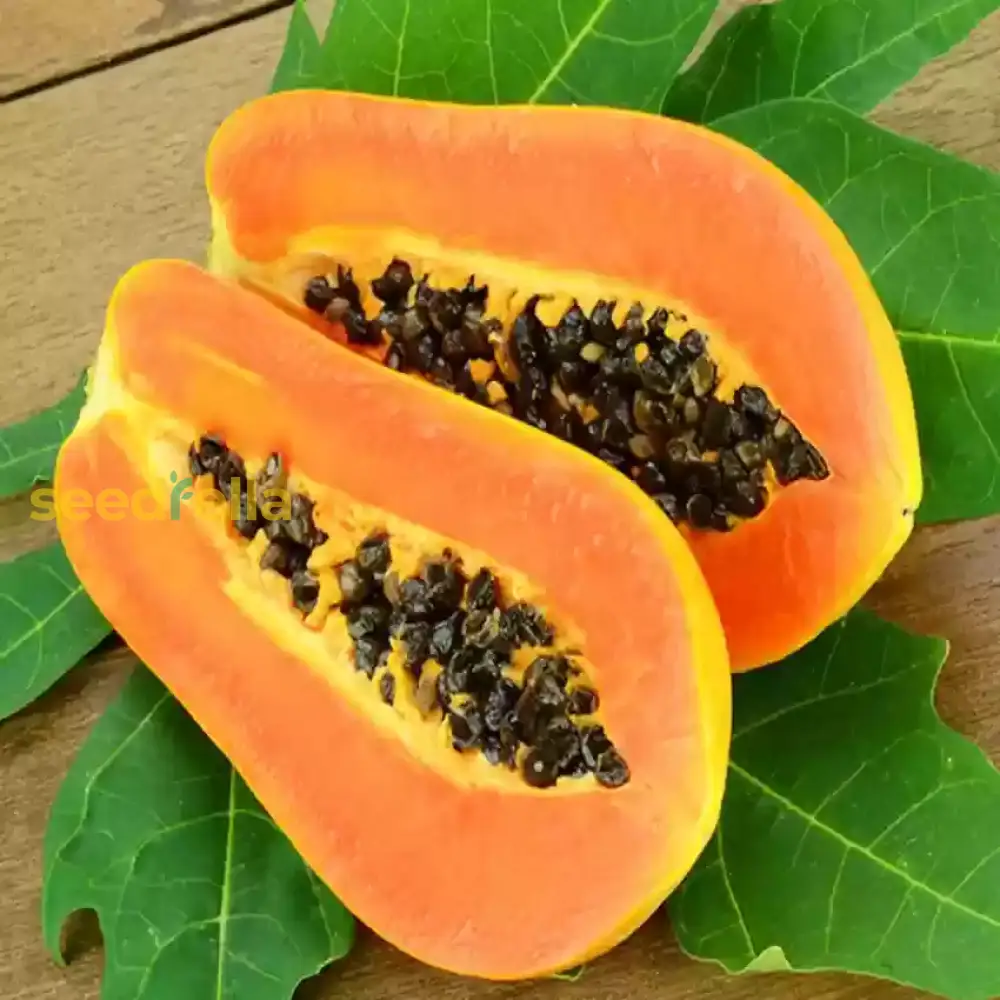Dwarf Cylindrical Papaya: A Compact and Productive Fruit for Home Gardens
Dwarf Cylindrical Papaya (Carica papaya) is a unique variety known for its compact size, early fruiting, and high yield. Unlike traditional papaya trees, this dwarf variety reaches only 4 to 6 feet in height, making it perfect for small gardens, patios, balconies, and even indoor container growing. It produces large, cylindrical fruits with sweet, juicy flesh, packed with essential nutrients.
For gardeners looking for a fast-growing, low-maintenance tropical fruit plant, the Dwarf Cylindrical Papaya is an excellent choice.

Why Grow Dwarf Cylindrical Papaya?
There are many reasons to grow this exceptional fruit in your garden:
- Space-Saving Growth: Its compact height makes it suitable for both outdoor and container gardening.
- Fast Fruiting: Produces fruits within six to nine months of planting.
- Continuous Harvest: Yields fruit year-round in warm climates.
- Nutrient-Rich: High in vitamins A, C, and E, along with fiber and antioxidants.
- Low Maintenance: Requires minimal care and adapts well to different conditions.
- Heat and Drought Tolerant: Thrives in warm, tropical, and subtropical climates.
- Pest Resistant: Less prone to common fruit tree pests and diseases when properly maintained.
When to Plant Dwarf Cylindrical Papaya
- Best Planting Time: Spring to early summer, when temperatures are consistently above 70°F (21°C).
- Germination Period: Seeds typically sprout within 10 to 21 days under warm conditions.
- First Fruiting: The plant starts bearing fruit within six to nine months after planting.
Where to Plant Dwarf Cylindrical Papaya
Sunlight Requirements
- Prefers full sun, requiring at least six to eight hours of direct sunlight daily.
- Can be grown indoors near a bright window or under grow lights.
Soil Preferences
- Grows best in well-draining, sandy loam soil enriched with organic compost.
- Ideal soil pH range is between 5.5 and 7.0.
- Avoid heavy clay soils, which retain excessive moisture and can cause root rot.
Best Planting Locations
- Backyard gardens in warm climates.
- Containers or pots of at least 15 to 20 gallons with proper drainage.
- Greenhouses for extended growing seasons in colder regions.
How to Plant Dwarf Cylindrical Papaya
Step 1: Preparing the Soil
- Use rich, organic soil that drains well.
- Mix compost or aged manure to improve fertility.
Step 2: Sowing Seeds
- Plant seeds half an inch deep in moist soil.
- Maintain temperatures between 70°F and 85°F (21°C to 29°C) for optimal germination.
- Space plants five to six feet apart for good air circulation.
- Water gently, keeping the soil evenly moist but not soggy.
Step 3: Transplanting
- Once seedlings are six to eight inches tall, transplant them to their final growing spot in the garden or a large pot.
- Choose a warm, sunny location for optimal growth.
How to Care for Dwarf Cylindrical Papaya
Watering
- Water deeply once or twice a week, depending on climate conditions.
- Allow the soil to dry slightly between watering to prevent root rot.
- Mulch around the base to help retain soil moisture.
Fertilization
- Apply a balanced organic fertilizer (10–10–10) every two to four weeks.
- Supplement with potassium-rich fertilizers to enhance fruit production.
- Avoid excessive nitrogen, which promotes leaf growth at the expense of fruit production.
Pruning & Maintenance
- Remove dead or damaged leaves to improve air circulation.
- Thin out crowded areas to allow more sunlight to reach the plant.
Pest & Disease Control
- Keep an eye out for aphids, spider mites, and whiteflies.
- Use neem oil or organic insecticidal soap to control pest infestations.
- Ensure proper drainage to prevent fungal infections.
Companion Plants for Dwarf Cylindrical Papaya
Planting companion plants alongside papaya can help improve growth, repel pests, and maximize space.
Best Companion Plants
- Marigolds — Help deter common garden pests.
- Basil and Mint — Improve air circulation and keep insects away.
- Legumes (Beans and Peas) — Fix nitrogen in the soil, promoting papaya growth.
- Lemongrass — Helps repel mosquitoes and fruit flies.
Plants to Avoid
- Tomatoes and Eggplants — Attract similar pests that can harm papaya plants.
- Large Trees — Compete for sunlight and nutrients.
Harvesting and Storing Dwarf Cylindrical Papaya
- Fruits are ready for harvest when they turn yellow-orange and feel slightly soft to the touch.
- Cut the fruit with a sharp knife, leaving a small portion of the stem attached.
- Store at room temperature until fully ripe.
- Once ripe, refrigerate to extend shelf life.

Health Benefits of Dwarf Cylindrical Papaya
- Boosts Immunity: High in vitamin C, which strengthens the immune system.
- Aids Digestion: Contains papain, an enzyme that helps break down proteins.
- Supports Heart Health: Rich in fiber and antioxidants that promote heart health.
- Improves Skin Health: Packed with vitamins A and E, known for anti-aging benefits.
- Regulates Blood Sugar: Low in calories and high in fiber, making it a good choice for diabetics.
Final Thoughts
Dwarf Cylindrical Papaya is an excellent fruit plant for home gardens, offering fast growth, continuous fruit production, and minimal maintenance. Whether grown in a backyard, container, or greenhouse, this compact variety makes it easy to enjoy fresh, homegrown papayas all year round.
Get premium-quality Dwarf Cylindrical Papaya seeds today from seedfella.com and start growing your own delicious tropical fruit!



Comments
Post a Comment